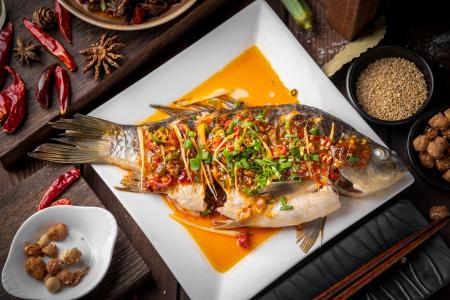Our Blog
|
Mandarin Go | Features of Chinese Food
Colour, Aroma, and Taste Generally speaking, there are three essential standards by which Chinese cooking is judged, namely, colour, aroma, and taste, with taste being the most important. Colour refers not only to the beautiful colour of the food, but also to the layout and design. Aroma refers to the fragrant and appetizing smell of the dishes served on the table before eating. Taste is not only associated with tasting the food itself, but also with the appreciation of seasonings and texture.
Cooking Methods Locality and climate play an important role in cooking. They affect people’s choice of cooking materials and preference of cooking process. Over the centuries, Chinese people have acquired many cooking methods, which include boiling, stewing, frying, stir-frying, quick-frying, deep-frying, frying and simmering, smoking, roasting or barbecuing, baking, steaming, scalding, etc.
Seasonings Taste, to some extent, depends on the seasonings. There are many tastes-salty(salt, soy sauce), sweet(sugar, honey), sour(vinegar), fragrant(sesame oil, coriander, wine), spicy(chilli, garlic, ginger), tangy(monosodium glutamate or MSG), bitter(dried tangerine, bitter apricot kernel), etc. Sometimes the seasonings are complex. The suitable application of seasonings will produce a variety of dishes to suit a variety of tastes.
Chinese people hold that everything in the universe is either positive or negative, hot or cold, wet or dry, etc. So people think that the food they eat should keep a harmonious balance of these cosmic forces if they want to stay physically, emotionally and spiritually healthy. Each kind of food has its own characteristics of yin or yang. Yin foods are thin, cold and low in calories. Yang foods are rich, spicy, hot and high in calories. Boiling makes food yin; frying makes food yang. So Chinese cuisine always balances the two. It’s said that all main food colours should be include in a meal to ensure a range of nutrients.
Medicinal Function Chinese cuisine attaches great importance to nutrition. Based on traditional Chinese herbal medicine practice, medicinal cuisine combines strictly processed traditional Chinese medicine with traditional culinary materials to produce delicious food with health-restoring functions. Over the centuries, the Chinese have explored the world of plants, roots, herbs, fungus and seeds to find life-giving elements. They have discovered that many items have medicinal value and that improper cooking can destroy the nutritional value of some items. For example, ginger, one of people’s favourite condiments, is also used to soothe an upset stomach and as a remedy to relieve cold.
In general, Chinese food has its own characteristics. Whether a family is rich or not, a Chinese housewife can cook special delicious dishes.
|














